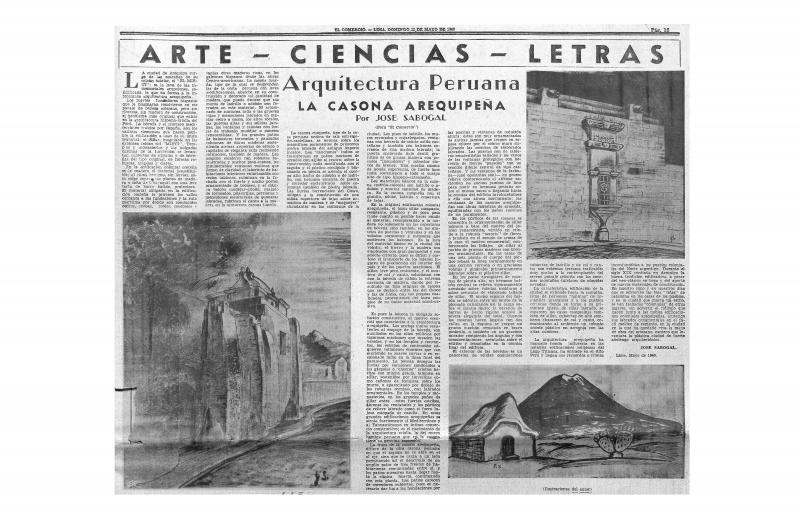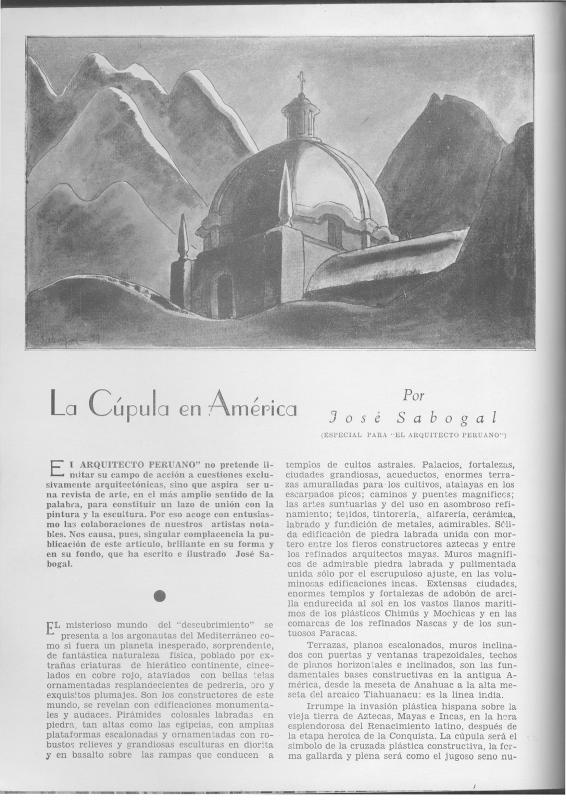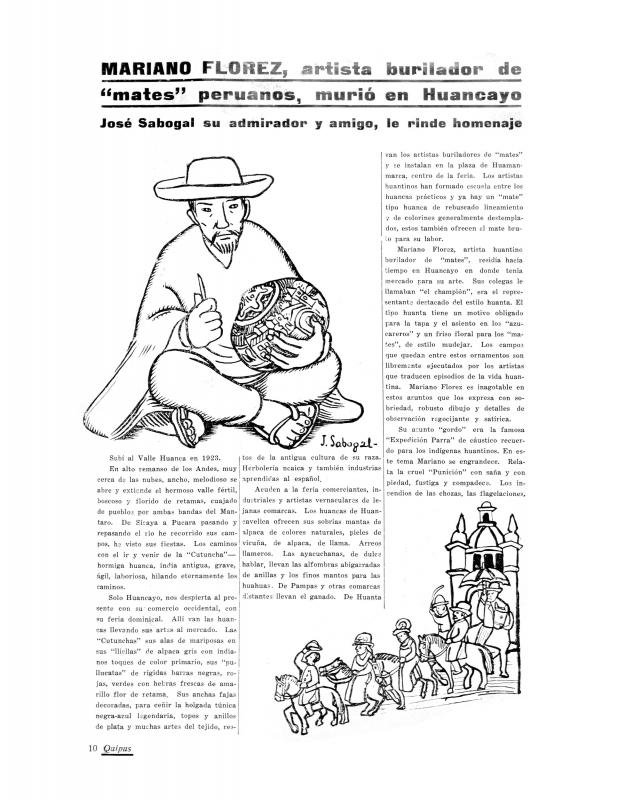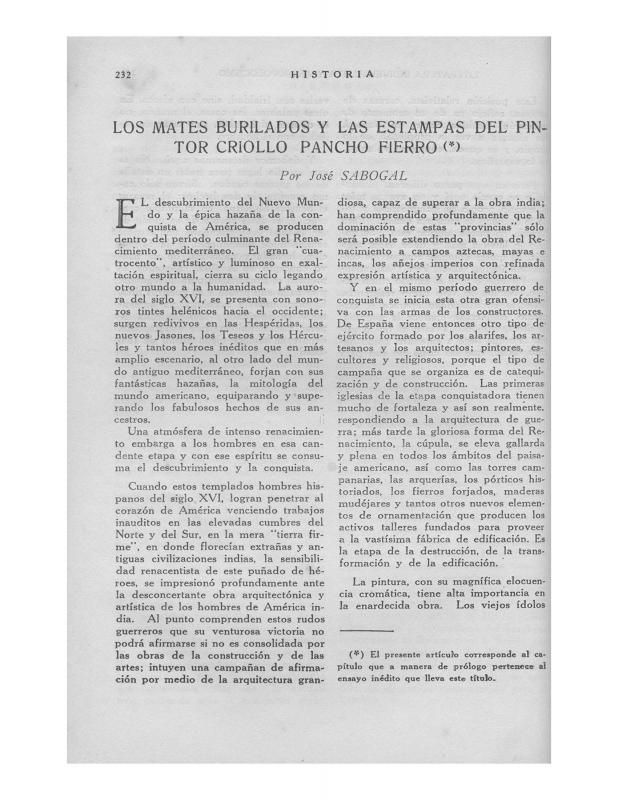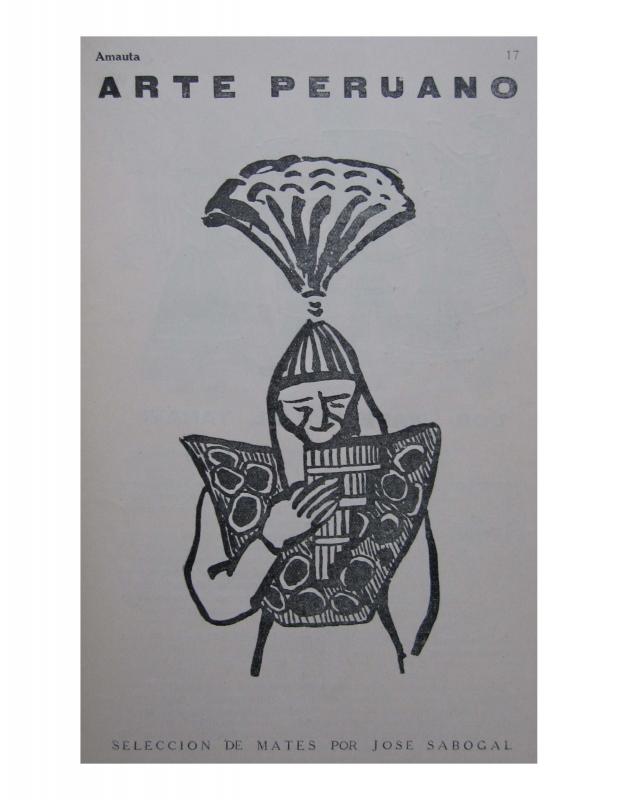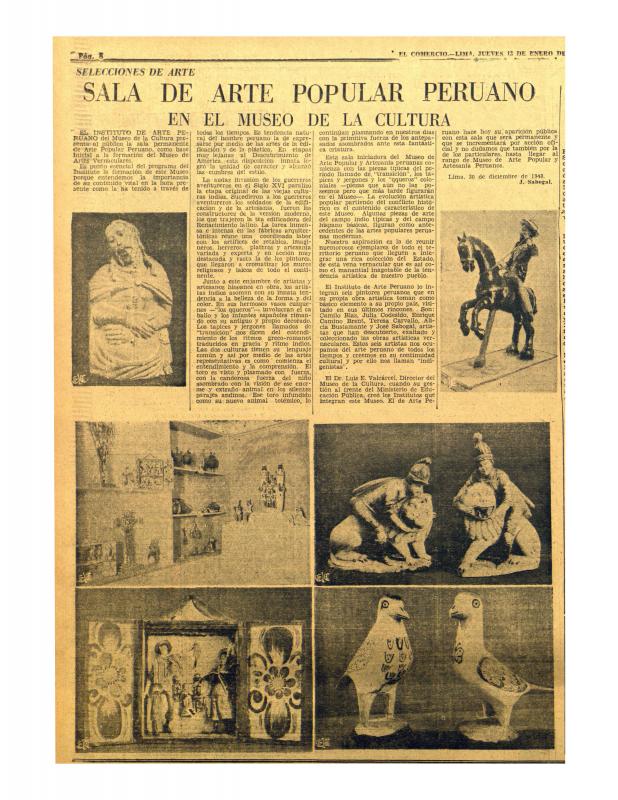This text by José Sabogal (1888–1956), instigator of pictorial Indianism in Peru, repudiates the removal of the colonial Arones fountain from its traditional location in the historical section of Cuzco.
Pictorial Indianism, which peaked in Peru in the twenties, thirties, and forties, was part of a wider movement in Peruvian society that attempted to redefine national identity in terms of native elements. At a certain moment, the chief concern of Indianism was the revalorization of “the indigenous” and of an Incan past seen as glorious; the movement also defended a mestizo identity that brought together “the native” and “the Hispanic.” José Sabogal was indisputably the leader and intellect behind Indianism in the visual arts. His deep sense of “rootedness” was influenced by regionalist tendencies evident in art from Spain (the work of Ignacio Zuloaga [1870–1945], among others) and in Argentina (Jorge Bermúdez [1883–1926], to name just one artist)—countries where Sabogal spent a number of years studying. When he returned to Peru in late 1918, he settled in Cusco, where he produced almost forty oil paintings of local characters and views of the city that were exhibited in Lima in 1919. That exhibition is considered the formal beginning of pictorial Indianism in Peru. His second solo show in Lima—the one that enabled him to consolidate prestige—was held in the galleries of the Casino Español in 1921. In 1920, Sabogal joined the faculty of the new Escuela Nacional de Bellas Artes, which he then directed from 1932 to 1943. The following painters, all of whom formed part of the Indianist movement, studied at that institution: Julia Codesido, Alicia Bustamante (1905–68), Teresa Carvallo (1895–1988), Enrique Camino Brent (1909–60), and Camilo Blas (1903–85).
In 1925, Sabogal returned to Cuzco for several months to make sketches for a new set of works, including La Fuente de Arones [The Arones Fountain]. That work was inspired by the fountain in the traditional Santa Ana section of the city (the removal of the fountain was the reason the author wrote this text), which therefore attests to the importance of this issue to the painter. This text appeared in Cunan (1931/32), a journal of Indianist art published in three cities in southern Peru (Cusco, Puno, and Arequipa) under the direction of painter Manuel Domingo Pantigoso.
[Of the many texts in the ICAA digital archive pertinent to Sabogal, the following were written by the artist himself: “Arquitectura peruana: la casona arequipeña (doc. no. 1173340); “La cúpula en América” (doc. no. 1125912); “Mariano Flórez, artista burilador de ‘mates’ peruanos, murió en Huancayo: José Sabogal su admirador y amigo, le rinde homenaje” (doc. no. 1136695); “Los mates burilados y las estampas del pintor criollo Pancho Fierro” (doc. no. 1173400); “Los ‘mates’ y el yaraví” (doc. no. 1126008); “La pintura mexicana moderna” (doc. no. 1051636); and “Sala de arte popular peruano en el Museo de la Cultura: selecciones de arte” (doc. no. 1173418)].

